BREAKFAST CONGEE, WITH EGGS AND BACON.
The best way to start the day. Also the best lunch, or dinner. Because congee doesn’t have to be bland, unless you need it to be.
Congee is all about the flavour of rice. It should taste of the rice you use, and of the meat you use to create the stock in which the rice cooks. A little ginger in there as it cooks helps keep things clean and fragrant.
Travelling through south-east Asia recently, I paid attention to the different rice porridges available, watching them change from delicate silken Thai versions laden with soft pork balls or sweet Thai sausage, to thick and almost creamy Cantonese ‘jook’ in Hong Kong, flecked with beef or chicken.
How you serve your congee is entirely dependent on your mood and needs. Plain and simple, with a scattering of fragrant spring onion and a handful of peanuts; or loaded with smoked or raw fish, century egg, char siu roast pork or finely chopped water chestnut.
May I make a further suggestion? A breakfast congee that plays to the breakfast egg-and-bacon theme with a boiled egg (soft or hard), and crisp bacon bits. It’s very simple, and very delicious.
As for the base congee, here’s one I prepared earlier. It’s a fairly straight-up recipe with an appealing logic – both pork belly and rice are cooked together, creating their own magical stock. You can then just shred the meat off the bone and deliver it back to the rice as you see fit, or have a bit more fun with it. Here (below) I’ve sliced the cooked pork belly then sizzled it in soy in a hot pan before returning it to the congee, which turns it more into a lunch or dinner situation.
PORK BELLY CONGEE
200 g jasmine rice
2.5 litres cold water
1 kg slab of belly pork, rinsed
Large knob fresh ginger, cut into matchsticks
Sea salt and pepper (white pepper is traditional)
Toppings:
2 tbsp soy sauce
2 hard-boiled eggs, halved or quartered (optional)
1 tsp toasted sesame oil
2 spring onions, finely chopped
2 tbsp salted peanuts
Rinse the rice well in cold running water and drain.
Combine rice, pork belly, half the ginger and cold water in a large pot, and bring slowly to the boil, skimming.
Reduce to a gentle simmer, and cook over low heat for 3 hours, partly covered, until creamy. Stir occasionally, to stop the rice sticking on the base. Add more water if it’s too thick, or cook longer if it’s too thin. Season with salt and pepper.
To serve, remove the pork belly, wipe dry and finely slice.
Heat 2 tbsp soy sauce in a small pan and fry the pork belly for 2 minutes to brown the skin, without allowing the soy to burn.
Divide the hot congee between four soup bowls. Place the fried pork belly on the rice and top with egg, remaining ginger, spring onions, salted peanuts and sesame oil.
Serve hot. Heaps of flavour, no need for extra soy.
To make the egg and bacon version instead, just use the pork belly congee recipe as your base, shred a little pork back into the rice, then add your egg and bacon. Boil an egg the night before, perhaps, so all you have to do is peel and quarter; and fry up a slice or two of bacon - chopped will cook and crisp faster, and make sure you get a bit of bacon in every mouthful of rice. (I used the whole rasher of bacon in the pic because I loved the shape it made).
For chicken congee: If you have a whole chook lying around, take off the breasts for another meal, and use the whole carcass to cook with the rice. Remove the carcass when the marylands are tender, and finish cooking the rice without overcooking the chicken. You can just shred the meat back into the rice to serve, and serve with a dribble of soy. If you just have a few chicken pieces around, halve the quantity of the recipe above, and consider replacing some of the water with chicken stock, to give you a head start.
BEST TIP EVER: To partly cover the pot during the long, slow cooking, rest two wooden chopsticks across the pot and place the lid on top.
Thanks for dropping by! And as always, thanks for your comments and suggestions. Special thanks to Terry for always making a big pot of congee when we land back in the country after a long-haul trip; the very best way to welcome yourself home.
I would also like to acknowledge the traditional owners of the lands and waters upon which I work, live, cook and play; the Gadigal people of the Eora Nation, and pay my respects to Elders past and present, and to the continuing strength and resilience of First Nations people, communities and cultures.

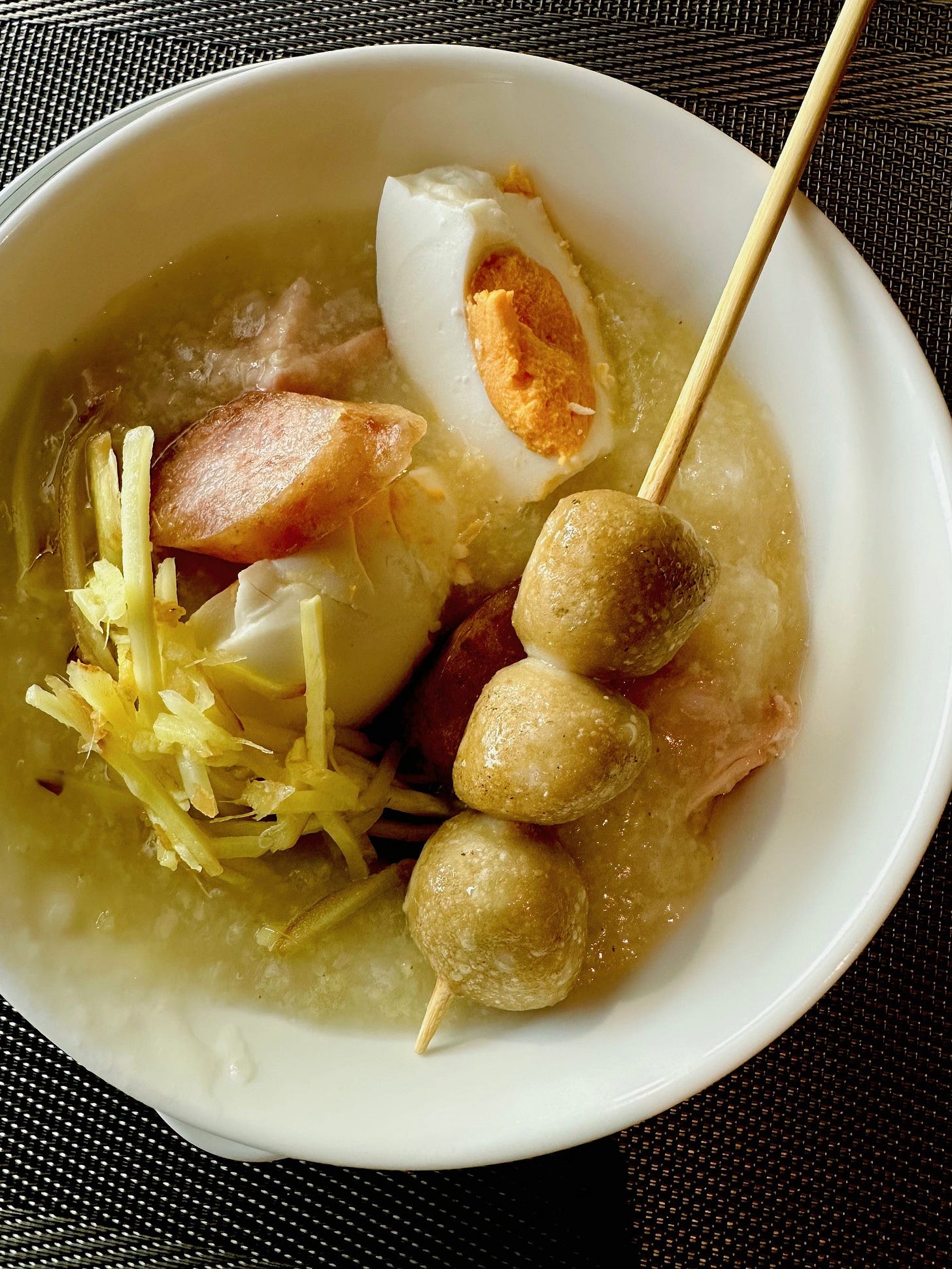
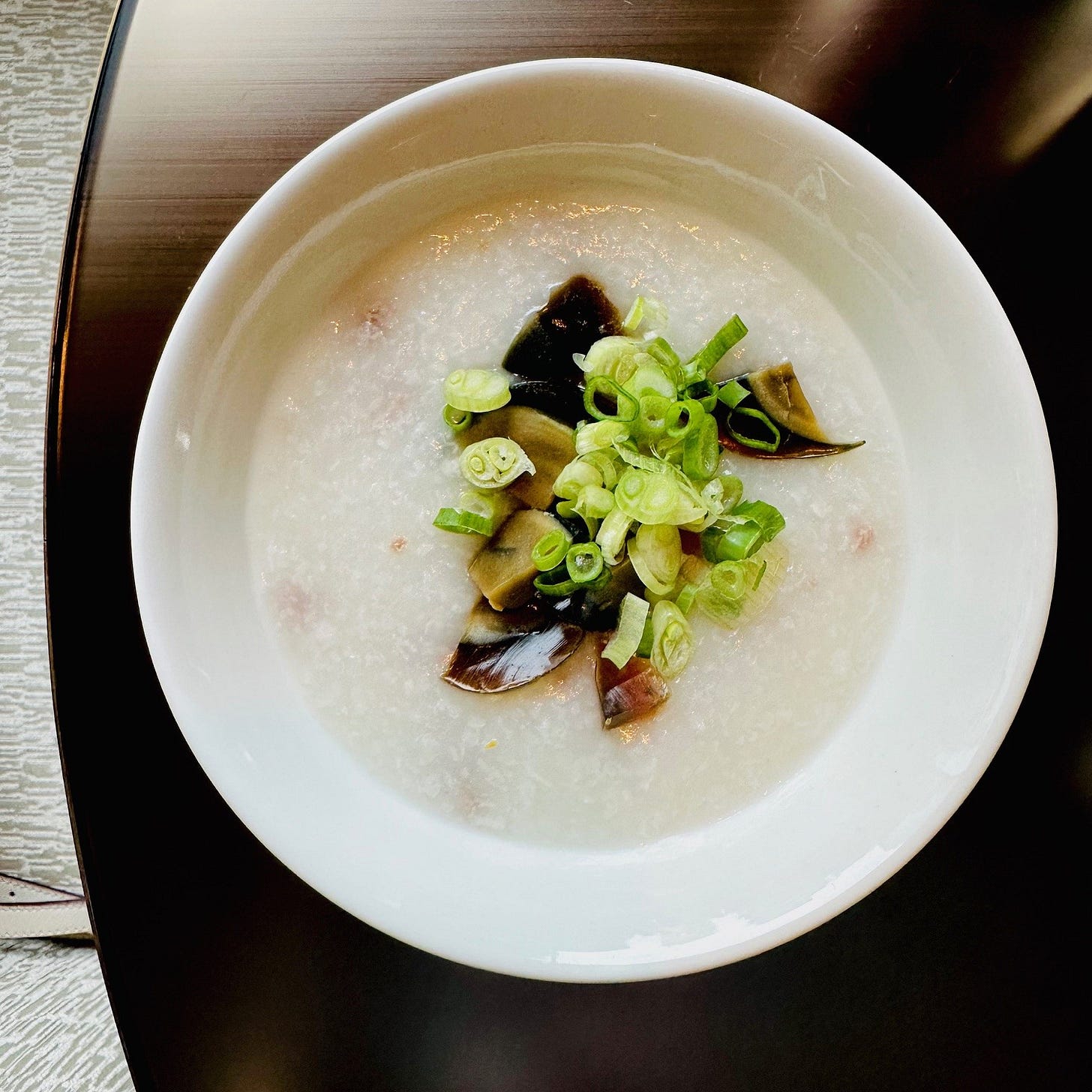
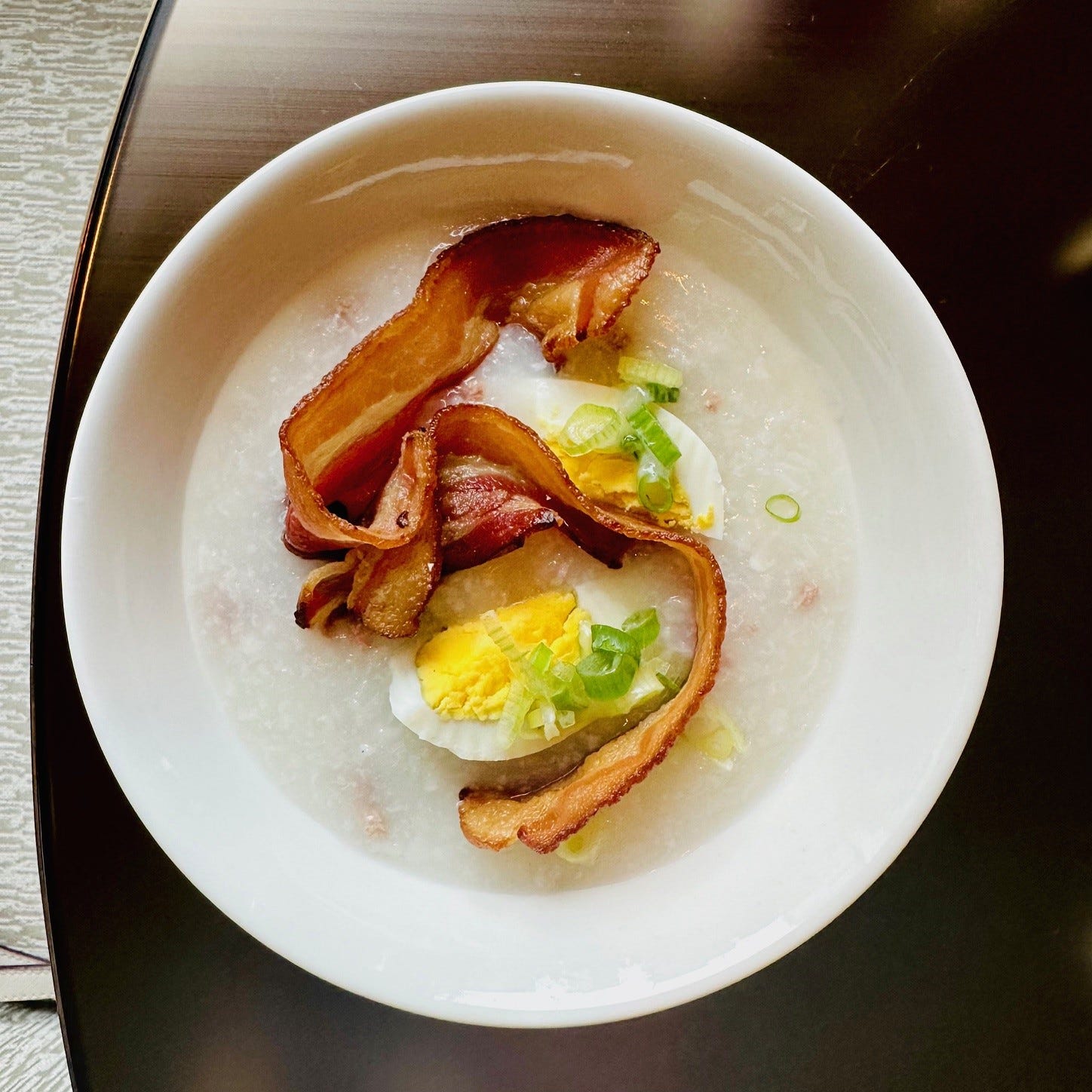
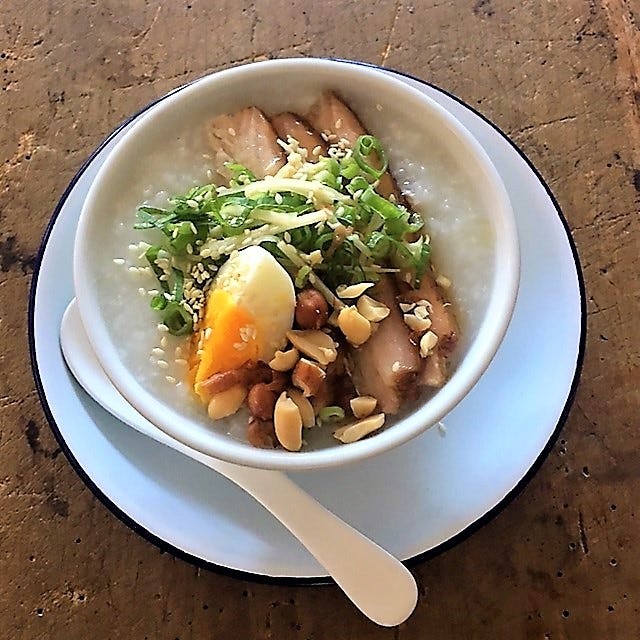
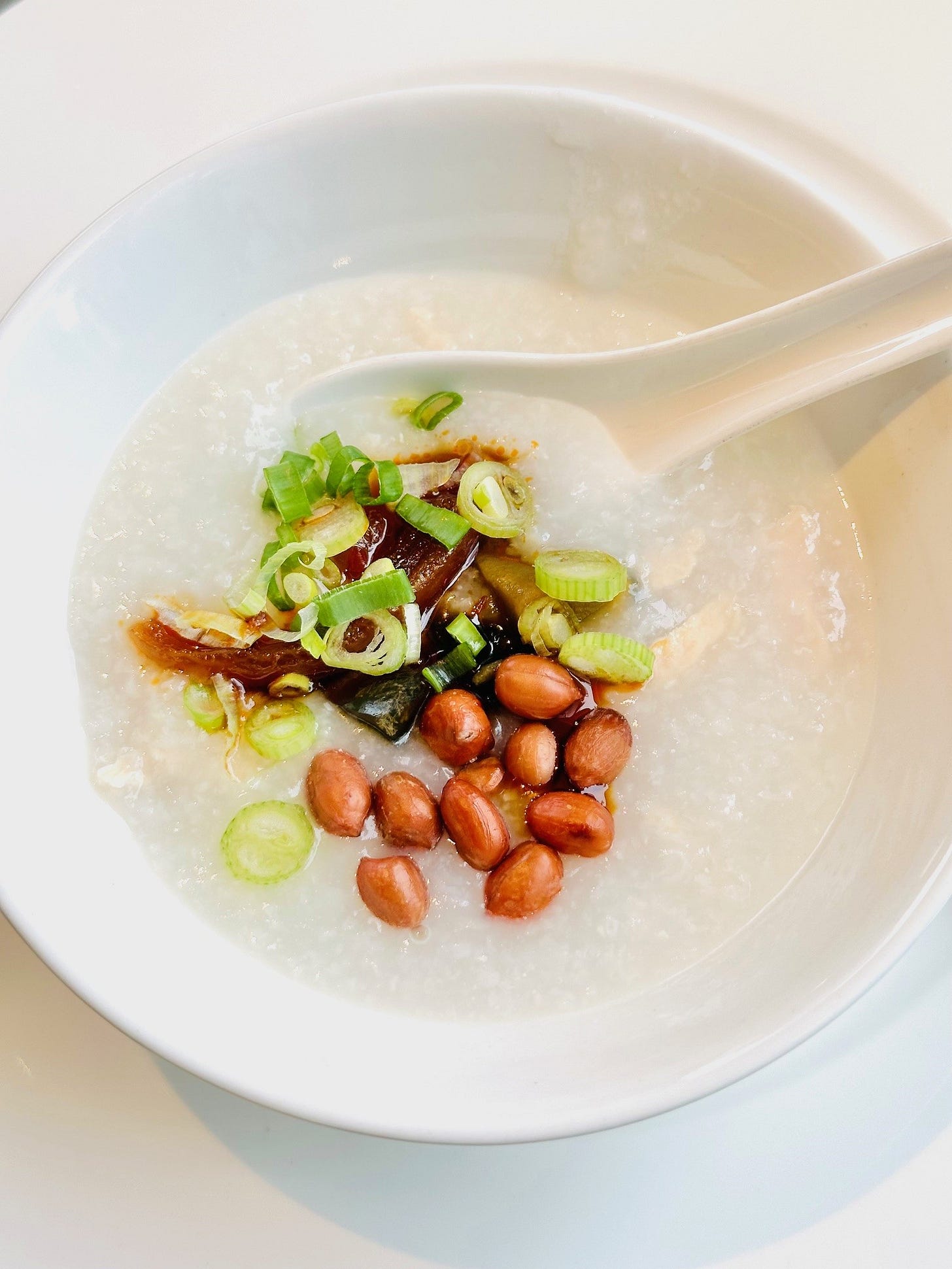
My favorite breakfast
As usual, thank god for Tez I say